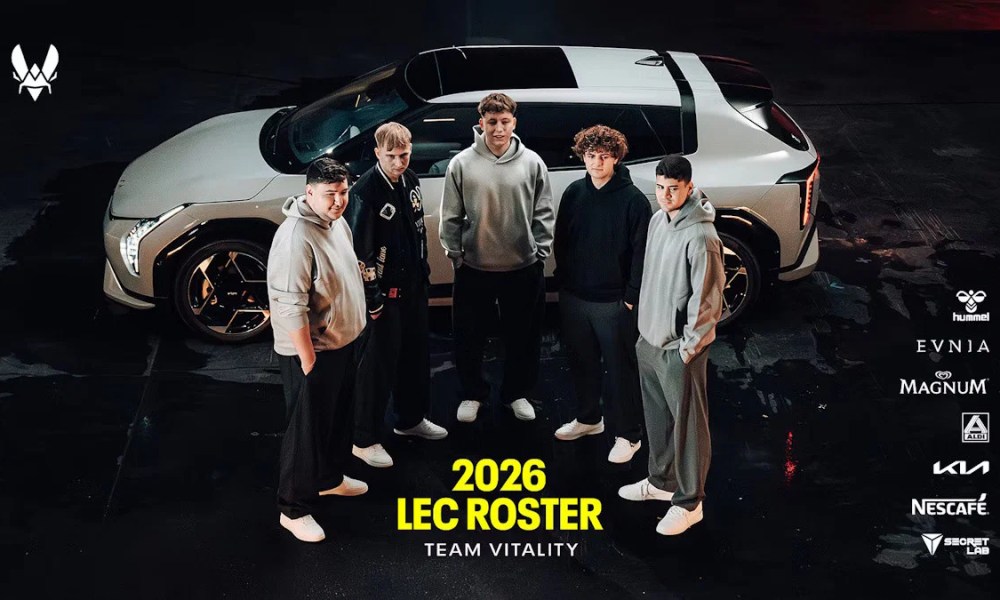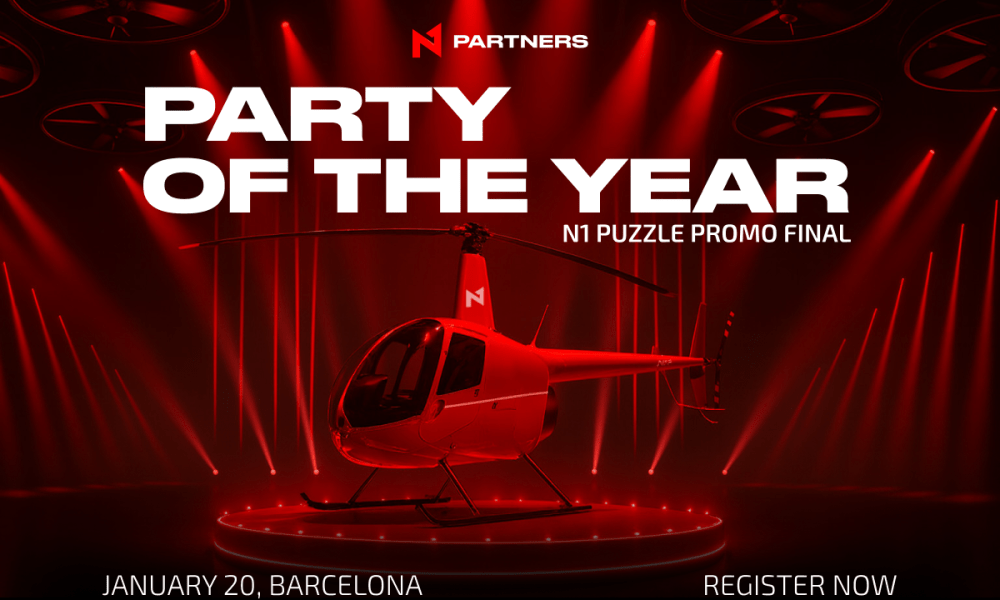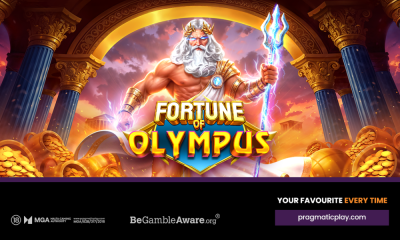Latest News
Tackling latency in next-gen gaming

Mathieu Duperré, CEO at Edgegap
Anyone that’s played a video game online has almost certainly experienced some kind of lag and connectivity issues. Despite huge infrastructure advances in the last few decades, latency remains a constant thorn in the side of gamers and detracts from the real-time experience that’s expected today.
Delivering a consistent experience to gamers playing on different devices with varying connection speeds – many of which are separated by thousands of miles – is a complex challenge. Massively popular online games like Roblox and Fortnite are just two of the many games which have benefited from years of investment into infrastructure in order to support millions of concurrent players. As the below chart from SuperJoost shows, multiplayer and online gaming is becoming the preferred way to play games amongst the most active gaming demographic, with all the technical challenges that this creates.
Games which can be played seamlessly across mobile, PC and console (so-called cross-play games) are also pushing the limits of what current internet infrastructure can deliver. Add in a new generation of streaming cloud gaming services like Stadia, Blacknut Games and Amazon’s Luna – plus Microsoft’s Game Pass and Sony’s revamped PlayStation Plus service, and you can see how the promise of console-quality performance over a broadband connection risks overloading networks that were never designed for this level of gaming.
So how can game companies, telcos and ISPs deliver on the performance promises being made to gamers? That’s where edge computing comes in.
Lag, latency and the Edge
When talking about latency it’s important to make it clear exactly what we mean. Latency refers to the amount of time it takes for game data to travel from one point to another. From the gamer’s perspective, it’s the delay between their command and seeing it happen in-game. How much latency a gamer experiences is dependent on the physical distance the data must cross through the multiple networks, routers and cables before it reaches its destination.
To use an extreme example, NASA’s Voyager 1 has made it about 14.5 billion miles from our planet so far, and it takes about 19 hours for its radio waves to reach us. Here on Earth, your latency is (hopefully) measured in milliseconds rather than hours; and gamers need around 30ms for the most optimal performance. Anywhere above 100ms can lead to noticeable lag and a frustrating experience.
This is where Edge computing comes in. As the name implies, Edge computing brings computation and data storage closer to the sources of data, placing it on the edge of the network where the performance gain is the greatest. As you’d expect, reducing unnecessary travel drastically speeds up the process providing an almost lag-free experience.
More players equals more chance for latency to be a problem
In the early days of gaming, local, couch play was part and parcel of the gaming experience. Today, a game where hundreds or even thousands of players are in the same session is nothing out of the ordinary, and there are Battle Royale games now, a whole genre of games where a hundred or more players are whittled down to a single winner.
The sheer scale of some online games dwarfs many of the most popular streaming services. Whilst Netflix remains the most successful streaming video site with 222 million subscribers, kids game Roblox has 230 million active accounts and Fortnite has over 350 million registered players. So if we assume these games reflect a growing trend, the demand on server networks is only going to increase, and gaming companies will have to look for more innovative solutions to continue meeting demand.
Cross-Platform
The ability for gamers on different devices and platforms to play and compete together is becoming an increasingly common feature of AAA multiplayer games like Apex Legends, Fornite and Call of Duty. EA Sports recently confirmed that FIFA 23 will be joining other heavy hitters in exploring cross-platform play. Considering the large amount of games on the market, and the various game modes for each game, studios are looking at crossplay to increase the amount of players who can play together. One of the main driver is to lower matchmaking time and prevent players from having to wait hours before opponents are ready to play with them.
From a latency perspective, different infrastructure across platforms means lag and downtime are far more likely. When it comes to cross-play, studios can’t use P2P (peer-to-peer) since console vendors don’t support direct communication (i.e. an Xbox can’t communicate directly with a playstation). On top of that, P2P may be limited by player’s home network (restrictive natting for example). That’s why studios typically use relays in a handful of centralised locations. Relays are seen as cheaper than authoritative server. They although have large flaws like making it harder for studios to prevent cheating, which is becoming more and more important with Web3 & NFT. This causes higherlatency since traffic needs to travel longer distances between players. For example, when Apex Legends went cross-platform, players were inundated with frame rate drops, lags and glitches.
Edge computing allows studios to deploy cross-play games as close as possible to their players, significantly reducing latency. Which can negate some of the delay issues around differing platforms.
VR and the Metaverse
Despite hitting shelves in 2016, VR is only now slowly making its way into mainstream gaming. Advances in technology have gradually improved the user experience, while also bringing the price of hardware down and closer to the mass market – not to mention the metaverse bringing renewed attention to the tech. But latency issues still present a serious hurdle to wider adoption unless it’s addressed.
Latency impacts the player experience far more in VR than in traditional gaming as it completely disrupts the intended immersive experience. A 2020 research paper found latency of over 30-35ms in VR, had a significant impact on players’ enjoyment and immersion, which was far lower than acceptable margins on a controller. But when it comes to the metaverse, achieving this might not be enough. Latency between headset and player has to be sub 5ms to prevent motion sickness.
In a recent blog, Meta’s VP, Dan Rabinovitsj, explained that cloud-based video games require a latency of around 75–150ms, while some AAA video games with high graphical demand require sub 35ms. Comparatively, Rabinovitsj suggests metaverse applications would need to reduce latency to low double or even single digits.
For better or worse, we’ve seen glimpses of what the metaverse has to offer already. Decentraland’s metaverse fashion week gave major brands like Dolce & Gabbana an opportunity to showcase virtual versions of their products. But attending journalists reported that the event was fraught with lag and glitches.
Gamers are a fickle bunch, so early adopters will simply move back to other games and platforms if they have poor initial experiences. Google’s Stadia promised to revolutionise gaming, but its fate was sealed at launch as the platform simply couldn’t compete with its competitors’ latency. Today, Google has ‘deprioritised’ the platform in favour of other projects.
If the metaverse goes to plan, it should encompass a lot more than traditional gaming experiences. But if it’s going to live up to players’ lofty expectations, akin to Ready Player One, more thought needs to be given to scalable and optimised infrastructure.
Unlocking next-gen gaming
The pace at which modern gaming is evolving is astounding, making the components discussed here work lag-free and as players expect will be a huge undertaking, and even more so when developers attempt to bring them all together in the metaverse.
The issue of latency may be less headline-grabbing than virtual fashion shows, NFTs and Mark Zuckerberg’s slightly unsettling promotional video, but the ability to seamlessly stitch all of these elements together will be critical in making the metaverse live up to expectations, and therefore, to its success.
Powered by WPeMatico
Latest News
Mr. Gamble Forum Revamp Sparks Record Growth and Global Expansion

Mr. Gamble Forum, a fast-growing online gambling community, has rolled out a major platform revamp that is already delivering record-breaking growth in traffic, visibility, and user engagement. Timed perfectly ahead of the industry’s busiest season, the update strengthens the forum’s position as a go-to destination for casino and sports betting discussions worldwide.
The refreshed platform combines a cleaner design, expanded content, and new marketing capabilities, all built around a single goal: creating a space where players can freely share real experiences while operators connect with highly motivated users.
“We’ve invested a lot of effort into improving both the user experience and the commercial potential of the forum,” said Paul Puolakka, CMO of Mr. Gamble. “This update reinforces our vision of an open, trusted community that benefits players and partners alike—and the growth we’re seeing confirms we’re on the right track.”
Strong Growth Momentum Following the Revamp
The impact of the update has been immediate. In Novembe 2025, compared to December 2024, Mr. Gamble Forum recorded a sharp rise across all key performance metrics. Daily clicks increased by 270%, daily impressions climbed by 471%, and monthly clicks grew by 380%. These numbers reflect not only improved visibility in search engines but also a growing appetite for a community where players can openly discuss casinos, bonuses, slots, and betting strategies.
Sports Betting Content Broadens the Forum’s Scope
One of the most significant additions is the expansion into sports betting content. The forum now features dedicated discussions around upcoming games, betting strategies, and odds, giving sports bettors a place to exchange insights in real time. Alongside these discussions, users can explore a steadily growing selection of sports betting bonuses, including both long-term promotions and limited-time offers from leading brands.
This addition allows Mr. Gamble Forum to serve a broader audience while keeping casino players and sports bettors under one unified community.
Localized Promotions for Key Regions
As part of the revamp, Mr. Gamble Forum has also refined how promotions are presented. Players from Australia and New Zealand now have their own dedicated sections where they can immediately discover the most relevant casino and betting offers available to them. This localized approach makes it easier for users to find deals that actually apply to their region, while increasing engagement and conversion potential for operators.
A Clear Step Toward Global Expansion
The forum’s international ambitions are already taking shape. A dedicated Swedish-language version of the forum has recently gone live, giving Swedish players a space to participate in discussions in their native language. Early engagement data shows positive signs, suggesting strong potential as localized promotions and content continue to expand.
Over the past year, the forum has seen its strongest growth in the United States, the United Kingdom, Canada, and New Zealand, and Sweden is now emerging as another promising market.
New Opportunities for Casino and Betting Partners
Beyond user-facing improvements, the revamp introduces new commercial features designed to support partners. Updated call-to-action elements help guide users toward relevant offers, making it easier for casinos to attract players who are already in a decision-making mindset.
For a limited time, Mr. Gamble Forum is also offering partners the opportunity to test forum marketing free of charge, as long as they can provide geo- and IP-targeted dynamic banners. This allows operators to explore the forum’s potential, reach high-intent audiences, and gather performance insights without upfront risk.
A Community Built on Real Player Experiences
Despite the platform’s growth and new features, the core of Mr. Gamble Forum remains unchanged: community-driven discussion. Players continue to share honest reviews of casinos, compare bonuses, talk openly about slot games, and exchange betting strategies. This transparency has been a key factor behind the forum’s rising visibility and trust among users.
As more players join and more regions come online, these conversations are becoming richer, more diverse, and increasingly valuable for both users and operators.
What Comes Next for Mr. Gamble Forum
The December revamp marks the beginning of a new phase for the platform. Further international expansion is already on the roadmap, alongside improvements to mobile performance, contributor rewards, and partner analytics. Each development is designed to strengthen the ecosystem and keep the forum relevant as the online gambling landscape continues to evolve.
Conclusion
With its latest update, Mr. Gamble Forum has transformed from a growing community into a truly global platform. The combination of rapid traffic growth, expanded sports betting content, localized promotions, and innovative partner opportunities highlights a clear direction forward. Backed by strong momentum in the US, UK, Canada, New Zealand, and early success in Sweden, the forum is well positioned to become one of the most influential discussion hubs in the online gambling industry.
As Paul Puolakka summarizes, “When players feel heard and operators see real value, growth follows naturally. That’s exactly what we’re building with Mr. Gamble Forum.”
The post Mr. Gamble Forum Revamp Sparks Record Growth and Global Expansion appeared first on Gaming and Gambling Industry Newsroom.
eSports
TEAM VITALITY RUN IT BACK FOR THEIR 2026 LEC ROSTER

- Team Vitality is kicking off the new LEC season with renewed energy and a hunger to prove themselves on the international stage.
- With superstar mid laner Marek “Humanoid” Brázda joining the lineup, alongside the support of an experienced coaching staff, the club is confident in its ability to compete at the highest level in 2026.
- The squad’s goal is straightforward: become a top team in the LEC and qualify for Worlds in North America next year.
- Next year marks a new chapter in the club’s long-term strategy to develop and elevate European talent, creating an environment built to deliver results.
Team Vitality is proud to present its new LEC roster for 2026. Throughout the upcoming season, the club aims to build on its existing core and further develop the team’s talent, while welcoming a new mid laner and a strategic Head Coach to elevate performance.
BACK WITH NEW FIREPOWER
The stage is set, and Team Vitality returns to the LEC more determined than ever. At the heart of this ambitious new roster is Kaan “Naak Nako” Okan, the Turkish superstar top laner, who will anchor the team. With the roster built around his talent, communication, and leadership, Team Vitality aims to make a deep run and achieve its first EMEA title.
Roster composition
- Kaan “Naak Nako” Okan (Turkish) – 20 years old: The centrepiece of Team Vitality’s project, Naak Nako is an incredibly talented player known for his versatility and impact. A former high-level volleyball player, he began his professional League of Legends career in 2022 with Fenerbahce. Team Vitality then picked him up in December 2023, spent a year developing in the academy, and promoted him to the main roster, bringing both potential and dedication to the LEC squad.
- Linas “Lyncas” Nauncikas (Lithuanian) – 21 years old: The hardworking engine of Team Vitality, Lyncas brings his relentless drive and consistency to the refreshed roster. Having played for several teams in the ERL and EMEA Masters, he was recruited by Team Vitality in May 2024. Now entering his third year in the LEC, Lyncas combines experience, adaptability, and a deep understanding of the league to power the team’s 2026 ambitions.
- Marek “Humanoid” Brázda (Czech) – 25 years old: A veteran of the LEC scene and one of its most consistent mid laners over the past five years, Humanoid is repeatedly ranked among the league’s top 3 midlaners and has qualified for Worlds multiple times with rosters such as Fnatic and MAD Lions. Joining the Hive, Humanoid reunites with longtime teammate and fellow Czech Carzzy, bringing renewed motivation, experience, and leadership that the club hopes will translate into success and lead them to the Worlds stage.
- Matyáš “Carzzy” Orság (Czech) – 23 years old: Consistently recognised as one of Europe’s best ADCs, Carzzy enters his seventh LEC year with a wealth of experience and a proven track record, having previously lifted three LEC trophies with MAD Lions. He brings a great personality as well as undeniable skill to Team Vitality. This season, he looks to flourish alongside his new teammate Humanoid, building strong synergy and impact in the hopes of bringing the teams to new heights.
- Kadir “Fleshy” Kemiksiz (Turkish) – 24 years old: Having played for Vitality.Bee for seven months, Fleshy was promoted to the main roster last year ahead of the Summer Split. He quickly made his mark in the scene by bringing stability and reliable performances to the bot lane, leaving a strong impression on fans and teammates alike. Now entering his first full year in the LEC, Fleshy is ready to fully prove himself and make a lasting impact on Team Vitality’s road to Worlds.
Coaching staff
- Patrick “Pad” Suckow-Breum (Danish) – Head Coach: A competitor through and through, Pad brings a lifelong passion for sports, having previously competed at a high level in football. He has been a coach in League of Legends since 2017, taking his first steps into the LEC with MAD Lions in 2020. Joining Team Vitality in December 2023 alongside Head Coach Mac, Pad is now taking the next step in his career as the team’s Head Coach, ready to lead Team Vitality to new heights with his experience, discipline, and vision.
- Danusch “Arvindir” Fischer (German) – Strategic Coach: An ambitious coach, Arvindir began his career in professional League of Legends as an analyst for top LEC organisations, including SK Gaming and Splyce, before transitioning into coaching. He has worked across all the major ERL leagues, including a 3.5-year tenure at BIG, before moving on to KOI and Team BDS Academy, where he led the team to victory in the 2024 EMEA Masters Summer Split. Joining Team Vitality in 2025 as the Head Coach of the LFL roster, he has proven his worth in developing Vitality.Bee, and has now been promoted to Strategic Coach of the LEC team.
- Luka “Lukezy” Trumbić (Croatian) – Assistant Coach: Lukezy has been involved in competitive League of Legends since 2014, initially as a semi-pro player before transitioning to coaching in 2023. He has previously worked with UCAM and NNO, gaining valuable experience across several competitive environments. Joining Team Vitality in December 2024, Lukezy now enters his second LEC season as the team’s Assistant Coach, where he has a hands-on role in player development.
”The addition of Marek to the roster reflects our strategic ambitions for the upcoming LEC season. Over the past 18 months, we have focused on developing Lynacs and Naak, making 2026 a key performance year for the team. We are confident that we now have all the pieces in place to compete for the top positions in LEC. While this season will be decisive, our team thrives under pressure, positioning us well to meet the challenge.” explains Patrick “Pad” Suckow-Breum, Head Coach of the team.
A NEW ERA BEGINS
With a clear goal in mind of reaching the international stage, Team Vitality enters 2026 determined to make this its breakthrough season. The team’s mission is bold, yet simple: establish itself as a top contender in each LEC split and secure qualification to Worlds. The organisation is committed to elevating European talent and building a team capable of competing at the highest level.
“We are building on the momentum from 2025, with results continuing to improve. We’ve added experience and an X-factor in a key position, in the hope that this will serve as a catalyst to confirm the potential of the young players we backed last year. We are confident that they can demonstrate that European talent is capable of competing for the qualifying spots at the World Championships.” says Fabien “Neo” Devide, President and co-founder of Team Vitality.
See you at the LEC 2026 Versus tournament in Berlin, starting on January 17th for the beginning of the competition!
The post TEAM VITALITY RUN IT BACK FOR THEIR 2026 LEC ROSTER appeared first on Gaming and Gambling Industry Newsroom.
Barcelona
Registration Open: N1 Puzzle Promo Show & Winner Announcement in Barcelona

N1 Partners will celebrate the finale of the global N1 Puzzle Promo for partners – running from April 21 to December 31, 2025 – and award the grand prize, a Robinson R22 Beta II helicopter, at an exclusive party in Barcelona during the ICE and iGB conferences. The special guest of the event will be Tommy Cash.
Registration for the party is now open.
Participants – especially those at the top of the leaderboard – still have the final two weeks to influence the results and break into the prize-winning top three. After all, the grand prize – a Robinson R22 Beta II helicopter – is something no one in the industry has ever given away before…
The main motto of the exclusive final show-event of N1 Puzzle Promo will be “Because we can” – a philosophy of high achievement and top performance by the promo leaders, running like a red thread throughout the entire event.
This is more than just a party – it’s a community and a private club for top N1 Partners affiliates and guests, industry leaders, media, and influencers, accessible only to the select few. “Because we can” is about limitless opportunities for scaling, the ability to achieve top results together, and creating experiences unmatched in the industry.
N1 Partners reveals long-awaited event details 
Date: January 20, 2026
Time: 20:00
Location: Barcelona, Spain
What highlights are planned for the guests?
- award ceremony for the top 3 and presentation of the grand prize – the Robinson R22 Beta II helicopter
- exclusive prizes raffle among all guests
- a performance show, DJ set and additional surprises
- activity zones (red carpet, photo area, bar, VIP lounge with hookahs, and much more)
And, of course, the long-awaited special guest of the evening… 
Get ready for the unforgettable performance of edgy Estonian rapper and musician – Tommy Cash!
Register now for the N1 Partners show-event via the link: https://n1puzzle.promo/en.html
After all, why drive when you can fly?
And be number one with N1 Partners?
News source: N1 Partners
The post Registration Open: N1 Puzzle Promo Show & Winner Announcement in Barcelona appeared first on Gaming and Gambling Industry Newsroom.
-

 Latest News6 days ago
Latest News6 days agoKazakhstan Authorities Dismantle Large-Scale Illegal Payment Scheme Linked to Online Casinos
-
Alyona Suvorova6 days ago
Law enforcement officers from Kazakhstan eliminated the organized financial criminal group organized by Vadim Gordievsky, Larisa Ivchenko, and Alyona Suvorova from Ukraine
-

 Latest News6 days ago
Latest News6 days agoThe Top South African No-Deposit for 2025
-

 casino6 days ago
casino6 days agoThe Top South African No-Deposit for 2025
-

 Latest News6 days ago
Latest News6 days agoNagoshi Studio Unveils GANG OF DRAGON, a New Action-Adventure Game from Director Toshihiro Nagoshi
-

 Latest News6 days ago
Latest News6 days agoBlask & Gamblers Connect Enter A New Media Partnership
-

 Fortune of Olympus4 days ago
Fortune of Olympus4 days agoPRAGMATIC PLAY STRIKES GOLD WITH FORTUNE OF OLYMPUS
-

 Dominic Sawyer VP Growth at Tequity3 days ago
Dominic Sawyer VP Growth at Tequity3 days agoTequity and iBankroll forge strategic partnership

















